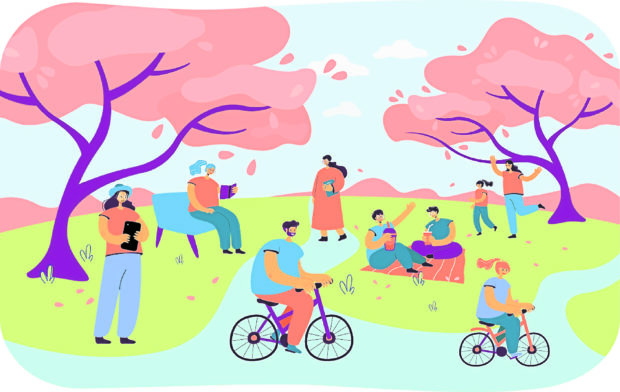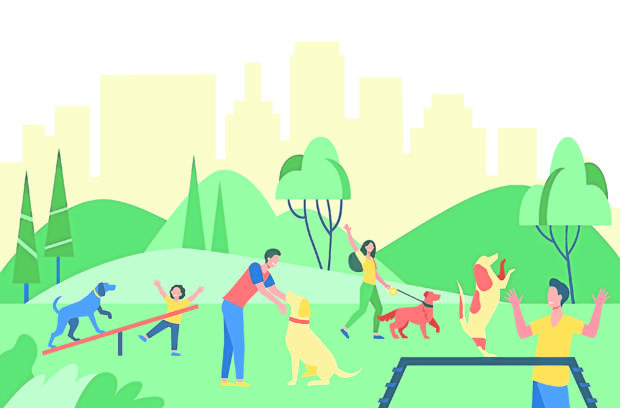Can virtual urban spaces become social equalizers?
We now move in a multi-dimensional world where the word space has taken on a wider range of meanings.
The physical sciences and built environment disciplines define space in terms of tangible attributes, measurable dimensions and global positioning system (GPS)-based locations.
Urban space, as a material concept, has been associated with land, air and water as empirical references. As a commercial concept, space is valued and traded based on its observable features. Other spatial concepts have been the subject of the early 1900s literature such as Aldous Huxley’s, “Brave New World” (Huxley, 1932).
Virtual spaces
Science fiction television series have portrayed teleporting as a mode of travel and the more recent films centered on the existence of multiple realities. But the fascination with virtual spaces has become more pronounced as we were forced to live much of our productive hours in confined physical spaces.
A great chunk of our public lives translates to virtual form as we travel beyond our walled enclosures via the internet highways. We connect with others through computer and phone screens, and we experience other realities through faithfully rendered visual graphics. By pushing a combination of buttons, we break free of our isolated spaces and carry on with activities that were traditionally accommodated by public spaces.
Article continues after this advertisementOver generations, we have seen socio-economic systems evolve from land-based agriculture and feudalism to central business district-based capitalism and the production chain-defined spaces of globalization (Cox, 1997). And now, we are going high gear towards virtual spaces with the increasing lead of the knowledge-based economies.
Article continues after this advertisementThroughout all these shifts in spatial encounters, we have also seen how power structures defined access. Varying levels of access highlight physical segregation trends as social mobility is dictated by affordability indices.
Classless environments, in principle
With mobile phones increasingly becoming a staple for Filipinos of all social classes, are we seeing a tendency towards leveling of opportunities to experience new spaces? Public spaces are supposed to be classless environments for everyone’s enjoyment. In principle, the intent should be to provide these as amenities over which everyone has access rights.
But how have these previous intentions to open up the public realm to all citizens been successful in our country?
In pre-colonial Philippines, the relationships in space of the tax-exempt Maharlikas, the land ownership privilege of the Timawas and the regulated movements of the Aliping Namamahay and Aliping Sagigilid were clearly class-based.
Plazas of the Spanish colonial period were located in the kabiseras or the municipal capitals. Surrounded by the church, the buildings for commerce and governance, the plaza was to be the meeting point of Filipinos of all social standing. The plazas, however, also represented the reference point for social stratification as those who lived the farthest from it were either the landed hacienderos or the tenant farmers (Scott, 1994).
Then came the 20th century malls which offered the same plaza experience as they accommodated religious, medical and government services on top of the primary function of enabling commercial transactions.
It is easy to see malls as civic spaces that allow everyone to enter and enjoy the airconditioned box without paying. But then beyond the main entrances and atria are the doors to fancy restaurants, chain and boutique stores wherein enjoyment of space and products has a price tag.
New public realm
Given the value of urban location due to the finiteness of urban land, should we be looking to virtual spaces as the new public realm? And will these new civic spaces be better social equalizers because of greater access?
More and more people meet up inside gaming and chat rooms. Many others are able to appreciate art and history in virtual museums. Students learn together in online classrooms. Shoppers purchase essential and luxury goods in online stores. Again, people of all classes are navigating cyberspace for work and recreation.
Will social mobility barriers be easier to hurdle in these new spaces? In this new marketing world, how will products in space be differentiated and priced? While technology widens the reach of new spaces of social engagement, the same forces that cause segregation and stratification in the physical world will still be at work.
In the same way that enjoyment of visual amenities such as the Taal Volcano has been limited by the proliferation of business establishments around the ridge, consequently requiring people to pay for the view, barriers to enjoying the benefits of virtual spaces will always be there. In the same manner that streets and sidewalks have distinguished people with and without cars, navigating this new space will be segmented by varying mobility challenges.
Place branding based on exclusivity segregates users in the physical urban space. Availability of technology, technical proficiency, hardware and software costs create different user categories. Access is also attributed to information or knowing that the space exists.
Nevertheless, we hope for a public place, physical or virtual, where there are no great disparities in access barriers due to social status. Just like physical spaces, these too need to be managed to become safe and secure spaces. The right amount of regulation will ensure vibrance of spatial experiences that breed transformative exchanges.
Virtual spaces may be designed to complement rather than replace our urban public spaces. As we refine overlaps and interfaces, what is referred to as multiple realities can become one vibrant reality.
References: Cox, Kevin R. (1997). Spaces of Globalization, Re-asserting the Power of the Local, Guilford Press; Huxley, Aldous. (1932). A Brave New World. Chatto and Windus, UK; Scott, William Henry. (1994). Barangay-Sixteenth Century Philippine Culture and Society, Ateneo de Manila University Press.
The author is a Professor at the University of the Philippines College of Architecture. She is an architect and urban planner.


